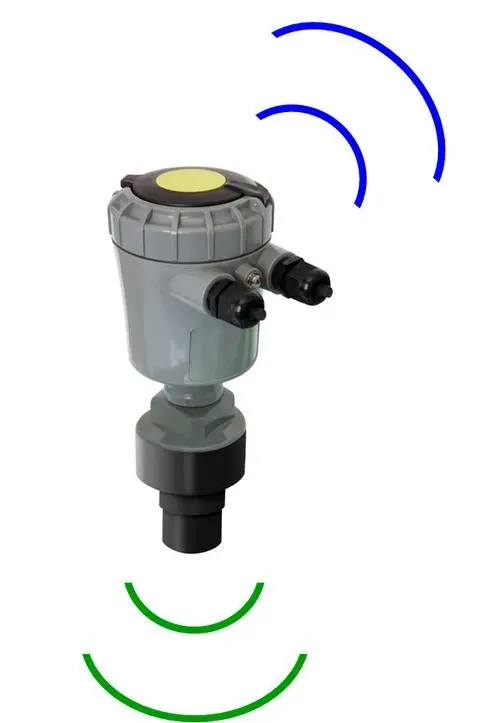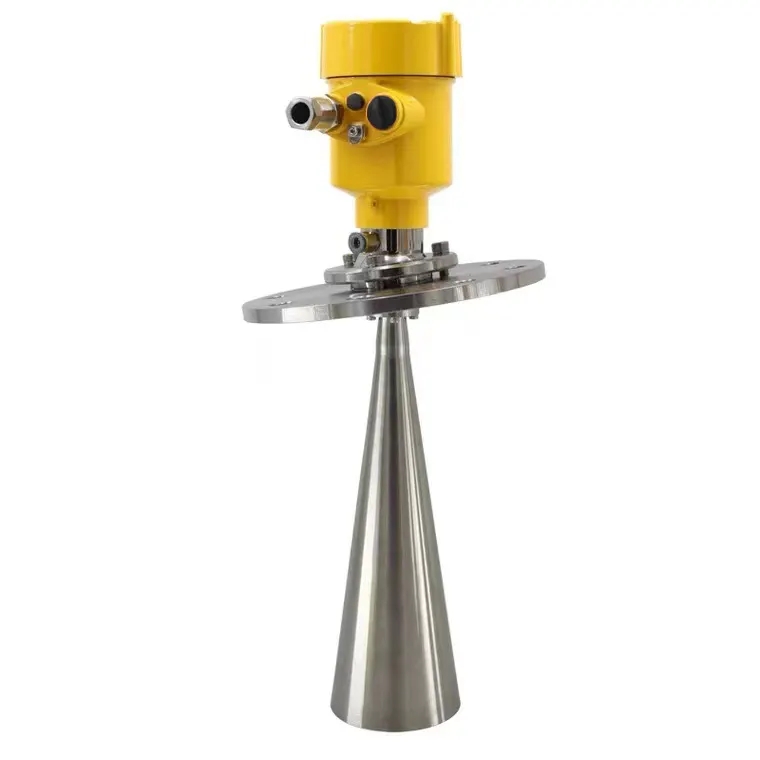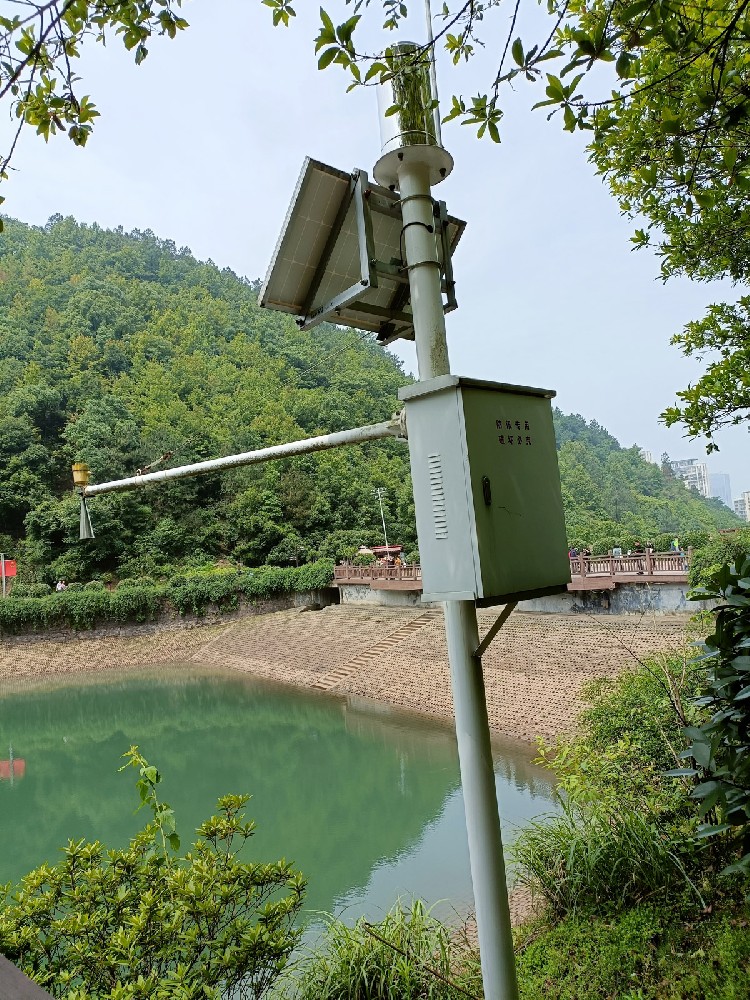

— Blogs —
—Products—
 Consumer hotline +8618073152920
Consumer hotline +8618073152920 WhatsApp:+8615367865107
Address:Room 102, District D, Houhu Industrial Park, Yuelu District, Changsha City, Hunan Province, China
Product knowledge
Time:2024-05-25 17:34:07 Popularity:377
Ultrasonic water level sensors and radar water level sensors are non-contact level measurement devices, they work on different principles and are suitable for different application scenarios and needs.

Ultrasonic water level sensor working principle:
1. the ultrasonic sensor sends out high-frequency sound waves (usually in the range of several kilohertz to several megahertz).
2. The sound waves are partially reflected back when they meet the liquid surface.
3. The sensor receives the reflected sound waves.
4. the time difference between the emission and reception of the sound wave is calculated.
5. according to the propagation speed of sound waves in the air (about 340 m / s), calculated sound wave propagation distance, that is, the height of the liquid level.
Ultrasonic water level sensor features:
- Suitable for environments with foam, steam, corrosive media.
- Highly affected by temperature and humidity, calibration is required.
- Relatively low resolution.

Ultrasonic water level sensor working principle:
1. The radar sensor emits microwave pulses (usually in the range of centimetre or millimetre waves).
2. The microwave pulse encounters the liquid surface and is reflected back.
3. The sensor receives the reflected microwaves.
4. the time of flight of the pulse is analysed.
5. Based on the propagation speed of the microwaves in air (about 300 m/s), the liquid level height is calculated.
Ultrasonic water level sensor features:
- Suitable for environments containing foam, vapour and corrosive media.
- Less affected by temperature and humidity.
- Higher resolution allows for precise measurement.
- Can be installed in the restricted space, not necessarily need line of sight propagation path.
In summary, both ultrasonic water level sensors and radar level sensors determine liquid level height by measuring the propagation time of sound waves or microwaves. Ultrasonic sensors are more sensitive to temperature and humidity, while radar sensors offer greater accuracy and stability. In selecting the right sensor, consideration needs to be given to the specific application environment and measurement requirements.
Advantages and disadvantages of ultrasonic water level sensors and radar water level sensors
Ultrasonic water level sensors and radar water level sensors in the practical application of each has certain advantages and limitations, these characteristics determine their applicability in a particular environment.
1. Good adaptability: ultrasonic sensors can be adapted to a variety of complex industrial environments, such as containing foam, steam, corrosive media, etc..
2. Flexible installation: ultrasonic sensors can be installed at a distance from the liquid level, and is not affected by light, colour and other factors.
3. Cost-effective: Compared with radar sensors, ultrasonic sensors are less expensive to manufacture, which makes them an economical choice for some applications where the requirements are not very high.
1. Accuracy issues: the measurement accuracy of ultrasonic sensors is greatly affected by temperature and humidity, and needs to be calibrated under specific conditions to maintain accuracy.
2. Distance limitations: ultrasonic sensors have a relatively limited working distance, usually between a few metres and a dozen metres, for smaller tanks or limited space.
3. Interference sensitivity: ultrasonic sensors can be affected by noise and interference, especially in noisy environments.

1. high accuracy: radar sensors can provide high measurement accuracy and are suitable for applications with high level control requirements.
2. Environmental adaptability: radar sensors are less affected by temperature and humidity, and can work stably in extreme environments.
3. Convenient installation: radar sensors do not require line-of-sight propagation paths, suitable for installation in space-restricted environments.
1. cost issues: radar sensors are typically more expensive to manufacture than ultrasonic sensors, which may increase the overall cost of the system.
2. Material limitations: Radar sensors may not be suitable for all materials, and some materials may reflect or absorb microwaves, affecting measurement accuracy.
3. Maintenance requirements: Radar sensors may require regular maintenance to ensure their performance, especially in harsh operating environments.
When selecting a sensor, factors such as the complexity of the application environment, measurement accuracy requirements, cost budget, and ease of maintenance need to be considered. For example, ultrasonic sensors may be more appropriate in applications containing large amounts of foam or vapour, while radar sensors may be a better choice where high accuracy is required and environmental conditions are stable.
Prev:Water Level Sensor Product Introduction and Application Scenarios
Next:Lightning protection measures for automatic weather stations
Related recommendations
Sensors & Weather Stations Catalog
Agriculture Sensors and Weather Stations Catalog-NiuBoL.pdf
Weather Stations Catalog-NiuBoL.pdf
Related products
 Combined air temperature and relative humidity sensor
Combined air temperature and relative humidity sensor Soil Moisture Temperature sensor for irrigation
Soil Moisture Temperature sensor for irrigation Soil pH sensor RS485 soil Testing instrument soil ph meter for agriculture
Soil pH sensor RS485 soil Testing instrument soil ph meter for agriculture Wind Speed sensor Output Modbus/RS485/Analog/0-5V/4-20mA
Wind Speed sensor Output Modbus/RS485/Analog/0-5V/4-20mA Tipping bucket rain gauge for weather monitoring auto rainfall sensor RS485/Outdoor/stainless steel
Tipping bucket rain gauge for weather monitoring auto rainfall sensor RS485/Outdoor/stainless steel Pyranometer Solar Radiation Sensor 4-20mA/RS485
Pyranometer Solar Radiation Sensor 4-20mA/RS485
Screenshot, WhatsApp to identify the QR code
WhatsApp number:+8615367865107
(Click on WhatsApp to copy and add friends)